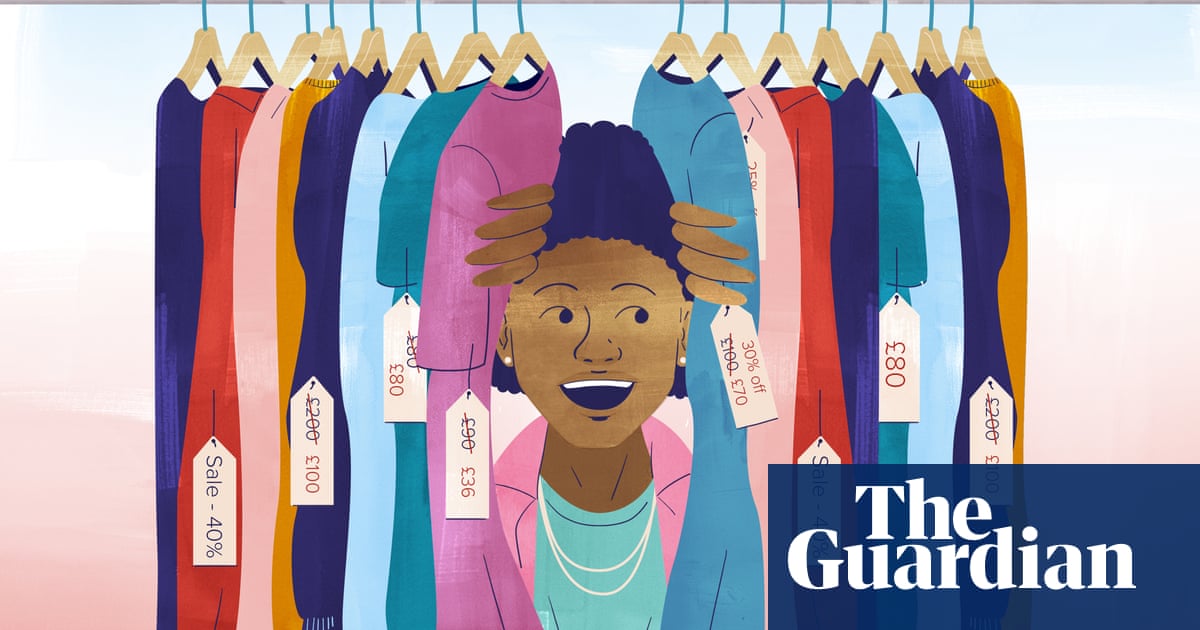How to buy great fashion that doesn’t cost the earth - 3 minutes read

Aim for longevity when buying new clothes – even if they are a bargain. Illustration: Jamie Wignall Money hacks How to buy great fashion that doesn’t cost the earth Take stock of the clothes you have and find the best new or secondhand deals if you need more
In the UK, the average person owns 115 items of clothing, 30 of which have never been worn. So, before you buy any more, go through your whole wardrobe. Pull everything out; reacquaint yourself with that once-loved dress and consider whether repairs or alterations would breathe new life into what you already have.
Also, consider selling, giving away or donating items you don’t wear. This will help make space for you to see, and appreciate, what’s left. Analyse the items you wear the most – think about colour, cut, silhouette, fabric and print – to home in on your personal style.
With judicious searching, the rental market can be great value for one-off events. For example, a £210 Reformation dress would be ideal for a wedding guest, and costs £25 for four days through Rotaro; a £1,980 red mesh Alexander McQueen number would be a memorable big birthday outfit for approximately £100 for four days via Hurr Collective.
There are lots of sites to try – from My Wardrobe for luxury to the cheaper Hirestreet – as well as maternity wear at For the Creators; (from about £15 for six days) and basics via the ethical brand Baukjen, which starts at £13 for a simple dress for a genuinely useful two-week timeframe.
No wonder we frequently mess it up. Things just aren’t as fraught when you’re buying a vacuum cleaner. What we should all be aiming for when buying clothes, according to the journalist Lucy Siegle, is longevity. She suggests only buying garments you can see yourself wearing 100 times, because of the environmental toll.
Ethical brands tend not to be the cheapest, for obvious reasons, though some may surprise you: Yes Friends sells T-shirts for £7.99 and hoodies for £29.99; People Tree has dresses from £29.50 in its summer sale, though most are closer to the £60 mark; Mayamiko’s sale starts at about £29, though options are necessarily limited compared with the high street.
Avril Mair, the Elle UK fashion director, recommends looking towards brands “which aren’t constantly changing their aesthetic”. For Mair that might be The Row, which she buys at a reduced price at the Outnet, or secondhand at Vestiaire or The RealReal, but the concept could work at Toast, Cos or The White Company.
Natural fibres, such as organic cotton, are always a better choice than fossil-fuel based virgin polyester, says Graham, who adds that some of the new wood-based fabrics, such as Tencel and EcoVero, are much more sustainable than conventional rayon, viscose and modal fabrics.
Most experts approach sales with caution. “Because fashion revolves around trends,” says Alexandra Stedman, the editor of The Frugality, “these are usually things brands need to shift, and almost never a longevity buy.” The exceptions, she says, are classic buys, such as a Whistles coat, that she found for £100 a few years ago and wears constantly.
Visit Bicester Village, the Oxfordshire outlet where Prada and Loewe sell last season’s stock for a discounted price, but to avoid overspending it is probably best to go looking for only one special thing, such as a handbag or winter coat, and with a clear idea of your budget.
Source: The Guardian
Powered by NewsAPI.org